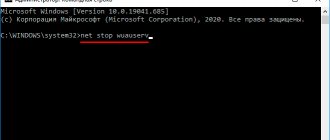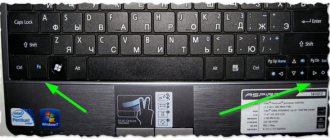Every user may have noticed that on some PCs the eyes get tired faster and more severely than on others. This is directly related to the type of monitor used on the device, as well as the frame rate per second that it is capable of delivering. This parameter is measured in Hz, which is where the user name “hertz” came from.
To use a PC in standard mode (work, watching movies, average-quality graphics games), a frequency of 60 Hz is sufficient, which is the most common on modern monitors. However, for eye comfort or to be able to play better games, users may need to increase the number of Hertz. This article talks about how to change the Hertz size of a Windows 10 monitor and whether it’s worth doing.
What is the Hertz voltage of a monitor and what is it responsible for?
The refresh rate is the frequency at which the LEDs pulse the pixels to change the colors, tones, and shades of the picture. It is measured in Hertz.
All processes occur through broadband pulse modulation. With its help, not only the image update speed changes, but also the brightness. The functionality of the regulator lies beyond limits exceeding 60-100 Hz, when the visual analyzer practically does not react to such a frequency, no matter how closely you look. A person simply does not notice the pulsation. Increasing the indicator is necessary to ensure that the image on the display does not flicker. In order not to get confused in the settings and not to subject your eyes and hardware to unnecessary strain, in most cases the operating system independently adjusts the image change rate to the frequency of a particular screen.
System Properties & Parameters
Go to Settings > System > Display and find Advanced display options. Here we have added the ability to change the screen refresh rate.
Or above, in the Video adapter properties for display 1, open the List of all modes. Select the one available with the highest refresh rate and apply the changes.
You can directly select Monitor in the properties of the video adapter. Expand the list of frequencies and change it to the one that suits you. In general, Hertz affects the quality of the gameplay.
Just select the desired value (it is better to set the maximum supported Hertz value of the monitor) and apply the changes. The screen refresh rate value changes without the need to restart the PC. In the window, confirm your intention to save the frequency.
How to increase monitor frequency in Windows 7
The function responsible for changing the screen hertz may sometimes not work.
Even if the display supports higher Hertz settings, Windows 10 will offer the maximum allowed 50 or 60 Hz by default. Therefore, you will most likely need to use the tools used in the Windows 7 operating system and below. You can increase the monitor frequency through the video card setup and management program or using third-party utilities. Companies specializing in the production of integrated and discrete video cards supply them not only with drivers, but also with special utilities that allow you to change image settings, including screen zoom. To make the necessary updates, they use not the built-in capabilities of Windows, but the functions of the video card driver.
NVIDIA Driver
Owners of an NVIDIA video card have the opportunity to change the Hertz setting using the NVIDIA Control Panel program. It is installed automatically along with the drivers and is launched by right-clicking on an empty space on the main PC screen.
- After launching the utility, go to the “Display” → “Change Resolution” applet.
- Select the active display, then call the settings panel using the “Settings” button of the same name.
- Next, click on the “Create custom permission” button to add your own values to the list of available parameters.
- Wait until a window opens with standard characteristics regarding the functioning of the monitor. Choose one of the existing options or create your own resolution, where you specify the screen refresh rate, color depth and other characteristics.
- After entering the desired values, press the “Test” button and wait for the result. If the monitor works normally after the driver tries to apply the selected settings, the program will prompt you to save the changes.
When you return to the previous page, you can see the new option you just added in the list of available permissions. Now all that remains is to click on the “Apply” button and confirm saving the changes made.
AMD Driver
Owners of an AMD video card can overclock their monitor and achieve better screen refresh rates through the settings of the AMD Radeon program. To do this you will need to do the following:
- Open the video card control panel, go to the “Display” section.
- Through the settings, activate the option “Enable permissions not available on the screen” and create a new custom resolution by clicking on the “+” icon on the right side of the program window.
- In the “Refresh rate” section, set the desired values, then click on the “Save” button, apply the changes made and make sure that the display is working normally.
To see the maximum values to which you can overclock the monitor, you should not immediately enter the necessary parameters. It is better to increase the frequency gradually, adding 1 Hz at a time and start testing. Do this until the screen turns black and the image disappears. Now all that remains is to clarify the latest values, set them and save them.
Option 2: System Information
There are many ways to open the system settings window. But now we will use only two.
Run window
- Press the two keys Win and R together. They will launch a window called “Run”.
- In the “Open” line you need to enter the command “msinfo32”.
In the “Open” line enter the command “msinfo32”
- It will open a new window with complete information about the computer's system.
- Next, click on the small plus sign to open sub-items and select “Display”.
Click on the small plus sign to open sub-items and select “Display”
- Information with screen resolution and frequency is located in the “Resolution” line.
In the “Resolution” line, look at the screen frequency
Through the search engine in the Start menu
- Click on “Start” and enter the word “information” in the search bar. Click on the option that appears called “System Information.”
Launch "System Information"
- A window will open in which you should go to “Components”, select “Display” and find the line in the right column that says “Resolution”. The first two numbers (1280 x 1024) are the resolution indicators, and the desired screen frequency will be the last 75 Hz.
In the “Resolution” line, look at the screen frequency
Possible consequences and solutions
Today you can overclock almost any monitor, regardless of the brand and year of manufacture. However, it should be remembered that you need to increase the frame refresh rate gradually, starting from low values. Incorrect settings can lead to unpleasant consequences.
| Problems | Solution |
After applying the changes, the following effects may appear:
| To resolve any of these issues, you must roll back to your previous settings. You can do this in several ways: Log in to the system in Safe Mode and return the default settings, canceling the changes. Connect a second monitor and perform operations to cancel the settings made. Reinstall the video card and display drivers by downloading them from official websites. Reconfigure the settings using a special utility for overclocking your monitor or a program for your video card. |
How to change the monitor's Hertz on Windows 10
Changing the screen frequency in the driver program settings is very simple:
- go to the “Display” applet, as shown above;
- change the “Refresh rate” filter and click “Apply”.
Change the “Refresh Rate” filter and click “Apply”
It is also possible to change the frequency through “Parameters”:
- Open “Advanced display settings” as shown in the example above. Click on “Display adapter properties”.
In the additional parameters, click “Display video adapter properties” - In the properties window, go to the “Monitor” tab, change the “Screen refresh rate” filter to the desired value and save the changes with the OK button.
In the properties window, go to the “Monitor” tab, change the “Screen refresh rate” filter to the desired value and save the changes with the OK button
In most cases, I use 60 Hz, since there is little point in setting it higher while working and watching movies. In addition, my monitors do not support stereo images. However, in rare cases, when I sit down at the computer to play, I immediately set the NOM to at least 100 Hz. The picture in the game immediately improves, drawdowns and frame losses become unnoticeable. Even the colors, it seems to me, change in a more saturated direction, the drawing of objects becomes more realistic.
How to see the Hertz voltage of a monitor on Windows 10
There are two main options to find out and change (if possible) the monitor's refresh rate: through "Options" or using the graphics driver settings:
- Right-click on an empty space on the desktop and select the “Display Settings” menu item.
Right-click on an empty space on the desktop and select the “Display Settings” menu item. - Next, click on “Advanced display options”.
Click on “Advanced display options” - On the additional settings page, we get acquainted with information about all monitors connected to the computer. Hertz is indicated in the line “Update frequency (Hz)”.
Hertzovka can be found in the line “Update frequency”
The second method is the graphics driver settings:
- Right-click on an empty space on the desktop and select “Graphics characteristics”. Depending on the hardware manufacturer, the name may be different (video settings, display settings, graphics settings, etc.).
Right-click on an empty space on the desktop and select “Graphics characteristics” - Go to the “Display” applet.
In the Graphics Control Panel, click "Display" - Next, select the display for which we want to find out information, and look in the “Refresh rate” column, which shows the installed Hertz screen speed.
Select the monitor and look at the Hertz value in the “Refresh rate” column
How to change the screen refresh rate on Windows 10
1. Repeat the first two points of the previous section of the article, that is, you should have the “Advanced screen settings” window open.
2. At the very bottom of this window, select “Graphics Adapter Properties.”
3. In the window that opens, go to the “Monitor” tab.
4. Next, you can change the screen frequency, but first make sure that the checkbox hides frequencies that are not supported by the monitor.
Tip: We recommend changing the screen refresh rate only when necessary. Also, before changing, be sure to check the specifications of your monitor to see what frequencies it supports.
5. After changing the screen frequency, click OK.
As you can see in Windows 10, the methods for changing the refresh rate and screen resolution have essentially not changed, only the style of the menus and settings themselves has changed.
- How to find out the hertz (refresh rate) of a monitor in Windows 10
Date: 06/26/2017 Author/Translator: Linchak
The screen refresh rate indicates the maximum number of frames per second that the user can see on the monitor. The monitor's Hertz value refers to the refresh rate. You can view and, if necessary, increase the screen refresh rate value directly in the Windows 10 operating system.
This article will tell you how to change the monitor's Hertz in Windows 10. The ability to enable vertical sync in games adjusts the number of frames per second to the monitor's refresh rate. You can change the screen refresh rate only if the monitor supports this feature and you have updated video card drivers on Windows 10.
Is overclocking harmful?
It’s worth noting right away that almost any modern monitor can be overclocked and its performance increased from 60 Hertz. Frequencies of 75-80 Hz are far from the limit both in new models and in old displays.
The reason is that any monitor is capable of updating the image more often than is included in its characteristics, including the maximum permissible ones. The restrictions are intentional, not because they might cause problems, but to maintain standards.
In addition, this allows you to use a marketing policy in which 2 monitors with the same components produce different frame refresh rates. As a rule, such “gaming” screens are sold at a higher price. It is important that such restrictions are imposed by the hardware controller.
As for the video card, the situation is similar. It can work faster, but relying on the capabilities of the monitor, it produces a limited frequency. Perhaps the only possible limitation is the type of connection. Older DVI and HDMI connections (prior to version 1.4) have low bandwidth. In the first case, with a high screen resolution, it is unlikely that you will be able to squeeze more than 65 Hz, and in the second - up to 75 Hz.
It is worth mentioning separately the overclocking of the laptop display. They are overclocked much less frequently to preserve battery life. In addition, they often use components that block increased flicker.
Additional Information
In the article, I do not separately mention the VGA and DVI connection types, since they are somewhat outdated (although on some video cards and monitors they allow you to get fairly high resolutions and adequate refresh rates; in any case, it is quite possible to use Full HD).
I also don’t touch separately on the topic of “matrix overclocking,” which usually comes down to setting a “custom” refresh rate in the video card manufacturer’s proprietary utility or in third-party programs like Custom Resolution Utility. However, I note that if artifacts appear on the monitor (sometimes they do not appear immediately), try reducing the refresh rate to the values recommended by the manufacturer for this resolution.
Sources used:
- https://winda10.com/personalizatsiya-i-oformlenie/kak-uznat-gertsovku-monitora-windows-10.html
- https://windows10i.ru/ekran/kak-izmenit-gertsovku-monitora.html
- https://remontka.pro/change-screen-refresh-rate/
Display frequency in NVIDIA Settings
This method is suitable for PC users who have an NVIDIA video card installed. You can also use a utility called NVIDIA Settings to find out the number of hertz on your monitor.
Step 1. Find “NVIDIA Settings” in the tray on the work panel.
Find “NVIDIA Settings” in the tray on the work panel
Step 2. Click on the icon to launch the program’s working window.
Select “Display” and click “Change resolution”
Step 3: Select the highest display frequency.
Select the frequency in hertz
Step 4. Click on the “Apply” button, after which the screen will darken and turn on again with a window to confirm the task. Click Yes.
Click “Yes”
In this way, you will not only find out how many hertz are in the monitor, but you will also be able to change them to a more acceptable number of hertz.
Popular Windows 10 hotkeys
"Rotate the screen." Accidental screen rotation is considered a common problem among users. Since many people are not even aware of this built-in Windows feature, they perceive a 180º screen as a malfunction of the operating system or a virus. In fact, everything is much simpler.
Hotkeys for rotating the screen in Windows 10
Simultaneously pressing the combination Ctrl + Alt + arrow (down, up, side) allows you to flip the screen image in any direction for the user’s convenience in work. For example:
- Rotate the screen 180º up - Ctrl + Alt + up arrow
- Rotate screen clockwise - Ctrl + Alt + right arrow
- Rotate the screen counterclockwise - Ctrl+Alt + left arrow
- Rotate down - Ctrl + Alt + down arrow
However, the above key combinations may not work if a standard Microsoft driver is installed on your computer. This often happens when using an outdated model of computer (laptop) with a modern operating system installed on it.
"Task Presentation" One of the main innovations of Windows 10 was the “Task View” function, or, in other words, the creation of several virtual desktops. You can move between them using hot keys, and not only sequentially. From desktop No. 1 it is possible to immediately get to desktop No. 4, which is extremely convenient for users.
Keyboard shortcuts to navigate to the Task View window in Windows 10
To go to the Task View window, press the Win + Tab hotkey combination. If you are currently using the first desktop and want to get to the third, then press the combination Win + Tab + 3, then click on the Enter button. If you want to move to the next desktop, then use the combination Win + Tab + left (right) arrow.
To close the desktop, press Win + Ctrl + F4. To, on the contrary, open a new desktop, use the key combination Win + Ctrl + D.
Hotkeys for closing and opening the desktop in Windows 10
The Task View feature is especially useful when you use your computer for multiple purposes. For example, you are working but want to take a break. In this case, the work base will be completely separated from leisure time. At the same time, you will use your favorite browser without worrying about the links you open on it for work. You can also drag applications from one desktop to another, or simply right-click on an application to select the appropriate menu item so that it opens on the new desktop.
"Screen lock". The Windows 10 lock screen has additionally begun to perform an informational function: it indicates the current time and date, and also displays notifications and tasks. By default, after a user-specified period of time when the computer is inactive, the screen lock is automatically set. However, the developers of Windows 10 suggest using a hotkey combination to instantly lock the screen if you do not want to leave your computer without protecting your personal information.
Hotkeys for locking screen in Windows 10
To do this, you should use the combination Win + L. If you have a password set on your account, the operating system will ask you to enter it before locking it. After blocking, all users will only see a white or black screen, depending on the selected theme.
"Calculator". "Calculator" for "Windows" is a program designed to do the same things as a standard calculator. It performs similar arithmetic operations, such as addition and subtraction, as well as calculator functions, such as finding logarithms and factorials.
Hotkeys for calling the Run menu in Windows 10
To launch the program, use the Win + R hotkeys and enter “calc” in the search bar that appears. The "Calculator" for "Windows" will be launched.
How to enable 75 hertz on an AMD monitor?
To overclock your monitor, you need to launch a new control panel for your AMD video card, go to the “Display” section and click on the “Create” button. This will take you to the monitor settings screen. Here you need to set the monitor refresh rate to 75 Hz and click on the “Save” button.
Interesting materials:
How to update the Intel HD Graphics driver? How to update the client in Dota? How to update furniture in the kitchen? How to update a fur collar? How to update a tile without changing it? How to update the application in World of Tanks? How to update a down pillow? How is economy class indicated on airline tickets? What is a hashtag? How is methane designated in the periodic table?
Additional software
There are special utilities that determine the characteristics of a computer, which are sometimes not available for review using other tools. These include the old, but still relevant, program Everest and its direct “descendant” AIDA64.
Since these programs were and continue to be distributed on a paid basis, you can, of course, look for a ready-made assembly with a built-in “greed pill.” But keep in mind that such pills often contain some kind of “infection” that will steal your important data and you You won’t even know about it.
Despite the fact that these programs have not been supported by developers for several years and no updates have been released for them, they work correctly with most modern equipment - both computer components and peripheral devices.
In terms of monitors, no “jambs” were noticed during the tests - the characteristics of interest are almost always determined. Depending on the version of the program, you will need to find the “Monitor” or “Display” item in the drop-down list on the left.
However, keep in mind that these utilities only monitor the operation of the device, but cannot change the characteristics. If you want to change the hertz, use one of the methods listed above.
And if you are seriously interested in this topic, you may find useful posts about how to choose the right monitor for your computer, as well as which brand of monitors are considered the best.
Is it possible to force the refresh rate higher than what the monitor supports?
With certain skills and the use of special software, it is indeed possible to force the screen refresh rate to increase even above the rate that the monitor supports by default.
Forced overclocking of the matrix is possible and even useful
What does overclocking a monitor mean?
Simple monitors typically have a refresh rate of 60Hz. For most tasks this is more than enough. However, some users try to achieve performance gains by artificially exceeding the parameter. This possibility is due to the fact that even in the most budget monitors, manufacturers leave some frequency reserve. This may also be due to the use of the same matrices in different models and manual setting of the refresh rate.
High Hertz allows you to receive relevant information on the screen and significantly reduces latency. This is especially noticeable in various dynamic games such as shooters or racing. Overclocking a monitor involves setting higher refresh rates without increasing the voltage. So, in its essence, this process can be considered one of the safest.
Note! Most monitors will simply reset their settings if the frequency is higher than normal.
Why it doesn't make sense to overclock your monitor
Before you start overclocking your monitor, you should think carefully. It is contraindicated to sharply increase the number of frames. This way you can easily get dead pixels or completely destroy the integrity of the image. So if you increase the Hz, then only gradually.
The dangers of overclocking a monitor have been proven in practice
Note! Gradually increasing the frequency, you need to check the monitor for a while and run various tests. If everything is in order, then it is quite possible to take another step. You can go this way until the first warning appears. Then it is advisable to leave everything as is or even roll back the indicators a little.
On various gamer forums and computer resources, there are often reports that overclocking a monitor is used to improve performance in games. However, in fact, the process only affects the operating parameters of the monitor and has virtually no effect on games. The image quality may improve slightly, but there will definitely not be an increase in FPS or faster loading times.
When carrying out any manipulations with the monitor, it is important to understand how many hertz a particular model can withstand, and to follow safety precautions without exceeding the established value. This is the only way to turn hardware interference into a benefit rather than a detriment.











